The Palm Beach Story

Brief Synopsis
Cast & Crew
Preston Sturges
Claudette Colbert
Joel Mccrea
Mary Astor
Rudy Vallee
Sig Arno
Film Details
Technical Specs

Synopsis
A bride and groom are inexplicably prevented from attending their wedding by their exact doubles, who then marry. Six years later, Tom and Gerry Jeffer's Park Avenue apartment manager shows their apartment to prospective tenants while they are still in residence because they are behind in rent. An elderly sausage manufacturer, known as the "Wienie King," who is looking at the apartment is so smitten by Gerry that he gives her $700 to pay all the bills. Gerry is tired of being broke and is doubly frustrated because Tom, a struggling architect, has continually rejected her attempts to use her beauty to get financial backers for his projects. Although she is still in love with Tom, Gerry so firmly believes that she has held her husband back that she leaves him, despite his earnest efforts to deter her. At Pennsylvania Station, Gerry uses her feminine wiles to get The Ale and Quail Club, a men's hunting club that has reserved an entire car, to buy her a ticket on the train headed for Palm Beach, Florida. The Club proves too rowdy, however, and after the men shoot out the windows she escapes into a sleeper car, where she accidentally breaks John D. Hackensacker III's spectacles while climbing into the upper berth. In the morning, Gerry discovers that the conductors have disconnected the Club's car because of their unruliness and have thereby left her without her suitcase. John, one of the wealthiest men in the world, takes an interest in Gerry and disembarks with her in Jacksonville, Florida. There the normally frugal multimillionaire takes pleasure in buying Gerry an entire wardrobe of extravagant clothes and a ruby bracelet. Gerry is thrilled when she discovers she has made the acquaintance of one of the richest men in the world, and accompanies him on his yacht to Palm Beach. When she sees Tom waiting at the dock for her, Gerry introduces him as her brother, "Captain McGloo." John's sister, the much-divorced Princess Maud Centimillia, who is ready to discard yet another suitor, Toto, immediately makes advances toward Tom. Gerry and Tom stay at the Hackensacker mansion, and while John woos Gerry, Maud woos Tom. Gerry, meanwhile, successfully interests John in becoming a financial backer of Tom's plans for a suspended airport. One evening, John, who has fallen in love with Gerry, serenades her underneath her balcony to the accompaniment of an orchestra, not realizing that he is providing the romantic background for Gerry and Tom to reunite. The next morning, Gerry gently rejects John's marriage proposal and reveals to a stunned John and Maud that she and Tom are not brother and sister, but are husband and wife. Always pragmatic, John vows to fulfill his commitment as a backer for Tom's project, and he and Maud are delighted when they learn that Tom and Gerry have twin siblings. A joint marriage soon takes place.

Director

Preston Sturges
Cast

Claudette Colbert

Joel Mccrea

Mary Astor

Rudy Vallee

Sig Arno
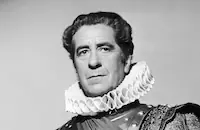
Robert Warwick
Arthur Stuart Hull
Torben Meyer
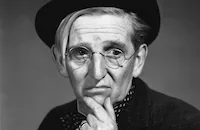
Jimmy Conlin
Victor Potel

William Demarest
Jack Norton
Robert Greig

Rosco Ates
Dewey Robinson

Chester Conklin
Sheldon Jett
Robert Dudley
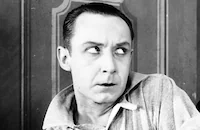
Franklin Pangborn
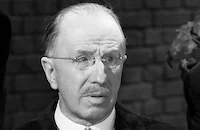
Arthur Hoyt
Alan Bridge
Snowflake
Charles R. Moore
Frank Moran
Harry Rosenthal
Esther Howard

Howard Mitchell
George Anderson
Harry Hayden
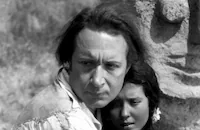
Monte Blue
Esther Michelson
Edward Mcnamara
Harry Tyler

Mantan Moreland
Keith Richards
Odette Myrtil
Julius Tannen

Byron Foulger
Lillian Randolph
Frank Faylen

J. Farrell Macdonald
Laurie Douglas
John Holland
George Melford
Max Wagner
Wilson Benge
Marcelle Corday
Alfred Hall
Crew
Harry Armstrong
Frank Caffey
James Campbell
Sam Comer
Reginald Connelly
B. G. Desylva
Hans Dreier
Ernst Fegté
Richard H. Gerard
Stuart Gilmore
Lorenz Hart
Irene
Paul Jones
Howard Joslin
Ernst Laemmle
Oscar Lau
Sam Ledner
Harry Lindgren
Felix Mendelssohn
Victor Milner
Phil Moore
Marie Morris
Ray Noble
Walter Oberst
Richard Rodgers
Gioacchino Antonio Rossini
Leonora Sabine
Walter Scharf
Harold Schwartz
Preston Sturges
Hal Walker
Wally Westmore
Victor Young

Photo Collections
Videos
Movie Clip





Hosted Intro



Promo
Film Details
Technical Specs

Articles
The Palm Beach Story
In his autobiography, Sturges wrote that The Palm Beach Story was "conceived as an illustration of my theory of the aristocracy of beauty, or, as Claudette Colbert expressed it to Joel McCrea, 'You have no idea what a long-legged gal can do without doing anything....' The setting was the Palm Beach I had known during the years when Paris Singer used to invite me to join him there. The few weeks I spent as Eleanor's house guest at Mar-a-Lago were not unuseful to the story either. Millionaires are funny."
Indeed they are, and The Palm Beach Story is a delightful romantic comedy that feels like a throwback to the screwball comedies of the mid-thirties like My Man Godfrey (1936). Joel McCrea plays a struggling inventor whose lack of funding prevents him from realizing any of his grand projects. His wife (Claudette Colbert), frustrated with their penniless existence, comes up with a solution to their dilemma - she will divorce McCrea, marry a millionaire, and then use his funds to finance her ex-husband's dream scheme. Naturally, McCrea is opposed to this proposal, but before he can stop her, Colbert catches a train to Palm Beach in search of wealthy bachelors, with her husband in hot pursuit.
The Palm Beach Story is full of autobiographical details from Sturges' life, such as the sequence in which the club car carrying the drunken members of the Ale and Quail Club is unceremoniously uncoupled from the rest of the train and left stranded on the tracks. A similar event happened to Sturges and his mother when they were traveling by rail to Paris and their compartment at the end of the train was unhitched and abandoned while they were having dinner two cars away. But Sturges' fascination with trains is no secret. In his autobiography he wrote, "How I loved the porters and the dining car waiters. How kind they were to little boys. Mother always let me have the upper berth so I could peek out over the top or slide down inside the green curtain to visit her, then climb up again like a monkey. Years later I make a picture called The Palm Beach Story using just such sleeping-car berths in a scene where Claudette Colbert steps on Rudy Vallee's face."
When The Palm Beach Story opened in 1942, it was a welcome relief from the large number of Hollywood dramas and combat films that addressed the current World War. Audiences wanted to laugh and Sturges' film provided the perfect outlet. The critics were harder to please, having been spoiled by the comic perfection of Sturges' The Lady Eve, but most of them were particularly impressed with the wild pre-credit sequence that opens the film, the witty dialogue, and Sturges' breakneck pacing. Some even noted that the style and tone of The Palm Beach Story was firmly in the tradition of classic French farce. In fact, the film shares many similarities with Feydeau's Le Mariage de Barillon in which complications divide several married couples and match them up with new partners before reuniting them with their original mates.
One of the real surprises of The Palm Beach Story was Mary Astor's delightful performance as Princess Centimillia, the wealthy man-hungry sister of millionaire J.D. Hackensacker III. Surprisingly, she didn't much care for the film. In her autobiography, My Life on Film, she wrote, "I wore a blond wig and waved a lorgnette around and Rudy Vallee played my brother, and I could never please Preston Sturges, the director. It was just not my thing. I couldn't talk in a high, fluty voice and run my words together as he thought high-society women did, or at least mad high-society women who've had six husbands and six million dollars. Joel McCrea had a line to me, 'Don't you ever talk about anything but Topic A?' and I had to say, 'Is there anything else?' That got a real naughty yok in theatres!"
Producer: Paul Jones
Director/Screenplay: Preston Sturges
Cinematography: Victor Milner
Costume Design: Irene
Film Editing: Stuart Gilmore
Original Music: Victor Young
Principal Cast: Claudette Colbert (Gerry Jeffers), Joel McCrea (Tom Jeffers), Mary Astor (Princess Centimillia), Rudy Vallee (John D. Hackensacker III), William Demarest (Members of Ale & Quail Club).
BW-88m. Closed Captioning.
by Jeff Stafford

The Palm Beach Story
The Palm Beach Story
In his autobiography, Sturges wrote that The Palm Beach Story was "conceived as an illustration of my theory of the aristocracy of beauty, or, as Claudette Colbert expressed it to Joel McCrea, 'You have no idea what a long-legged gal can do without doing anything....' The setting was the Palm Beach I had known during the years when Paris Singer used to invite me to join him there. The few weeks I spent as Eleanor's house guest at Mar-a-Lago were not unuseful to the story either. Millionaires are funny."
Indeed they are, and The Palm Beach Story (now on DVD from Universal Home Entertainment) is a delightful romantic farce that feels like a throwback to the screwball comedies of the mid-thirties such as My Man Godfrey (1936). Joel McCrea plays a struggling inventor whose lack of funding prevents him from realizing any of his grand projects. His wife (Claudette Colbert), frustrated with their penniless existence, comes up with a solution to their dilemma - she will divorce McCrea, marry a millionaire, and then use his funds to finance her ex-husband's dream scheme. Naturally, McCrea is opposed to this proposal, but before he can stop her, Colbert catches a train to Palm Beach in search of wealthy bachelors, with her husband in hot pursuit.
The Palm Beach Story is full of autobiographical details from Sturges' life, such as the sequence in which the club car carrying the drunken members of the Ale and Quail Club is unceremoniously uncoupled from the rest of the train and left stranded on the tracks. A similar event happened to Sturges and his mother when they were traveling by rail to Paris and their compartment at the end of the train was unhitched and abandoned while they were having dinner two cars away. But Sturges' fascination with trains is no secret. In his autobiography he wrote, "How I loved the porters and the dining car waiters. How kind they were to little boys. Mother always let me have the upper berth so I could peek out over the top or slide down inside the green curtain to visit her, then climb up again like a monkey. Years later I make a picture called The Palm Beach Story using just such sleeping-car berths in a scene where Claudette Colbert steps on Rudy Vallee's face."
When The Palm Beach Story opened in 1942, it was a welcome relief from the large number of Hollywood dramas and combat films that addressed the current World War. Audiences wanted to laugh and Sturges' film provided the perfect outlet. The critics were harder to please, having been spoiled by the comic perfection of Sturges' The Lady Eve, but most of them were particularly impressed with the wild pre-credit sequence that opens the film, the witty dialogue, and Sturges' breakneck pacing. Some even noted that the style and tone of The Palm Beach Story was firmly in the tradition of classic French farce. In fact, the film shares many similarities with Feydeau's Le Mariage de Barillon in which complications divide several married couples and match them up with new partners before reuniting them with their original mates.
One of the real surprises of The Palm Beach Story was Mary Astor's delightful performance as Princess Centimillia, the wealthy man-hungry sister of millionaire J.D. Hackensacker III. Surprisingly, she didn't much care for the film. In her autobiography, My Life on Film, she wrote, "I wore a blond wig and waved a lorgnette around and Rudy Vallee played my brother, and I could never please Preston Sturges, the director. It was just not my thing. I couldn't talk in a high, fluty voice and run my words together as he thought high-society women did, or at least mad high-society women who've had six husbands and six million dollars. Joel McCrea had a line to me, 'Don't you ever talk about anything but Topic A?' and I had to say, 'Is there anything else?' That got a real naughty yok in theatres!"
The Universal DVD of The Palm Beach Story is a no-frills affair with no extras but it does feature a luminous black and white transfer of the film and the audio is a fine digital mono mix, as good as can be expected for a movie made in the forties.
For more information about The Palm Beach Story, visit Universal Home Video. To order The Palm Beach Story, go to TCM Shopping.
by Jeff Stafford
The Palm Beach Story
Quotes
Tipping is un-American.- John D. Hackensacker III
So this fellow gave you the look?- Tom Jeffers
At his age it was more of a blink.- Gerry Jeffers
Seven hundred dollars and sex didn't even enter into it, I suppose?- Tom Jeffers
Sex always has something to do with it, dear.- Gerry Jeffers
Anyway, men don't get smarter as they get older. They just lose their hair.- Gerry Jeffers
Nothing is permanent in this world except Roosevelt, dear.- Princess
Chivalry is not only dead, it's decomposed.- J. D. Hackensacker III
Trivia
Notes
The working titles of this film were Is Marriage Necessary and Is That Bad?. The following written inscription appears after the wedding sequences at the beginning and end of this film: "And they lived happily ever after/or did they?" The opening wedding montage, which seems to make little sense, is somewhat explained in the final wedding scene, but its significance has been debated at length in modern sources. The title Is Marriage Necessary?, which was the name of Preston Sturges' original story, was rejected by the PCA. According to correspondence in the MPAA/PCA files at the AMPAS Library, the PCA initially rejected the script for The Palm Beach Story because of the "sex suggestive situations...and dialogue." Despite repeated alterations made to the script in November 1941, the PCA continued to protest the "light treatment of marriage and divorce" in the story, and the similarity between the character "John D. Hackensacker III" and American industrialist John D. Rockefeller. The filmmakers complied with some of the concerns of the PCA by altering specific lines which seemed too suggestive and by reducing "Princess Maud's" unsuccessful marriages from eight to three, plus two annulments. Information in the Preston Sturges Collection at the UCLA Special Collections Library reveals that Ina Claire and Curt Bois were considered for roles in this film. Although Rudy Vallee had appeared in many previous films, "John D. Hackensacker III" is considered his first comedic role. According to modern sources, Paramount signed Vallee to a contract as a result of his performance in this film. The Palm Beach Story was Joel McCrea's second picture for Sturges, although his first, Sullivan's Travels, was not released until shortly after this one.

Miscellaneous Notes
Released in United States 1942
Released in United States 1974
Released in United States June 1990
Released in United States on Video July 12, 1990
Re-released in United States on Video June 30, 1993
Released in United States 1942
Released in United States 1974 (Shown at FILMEX: Los Angeles International Film Exposition (The Preston Sturges Movie Marathon) March 28 - April 9, 1974)
Shown at Sydney Film Festival June 8-22, 1990.
Released in United States June 1990 (Shown at Sydney Film Festival June 8-22, 1990.)
Re-released in United States on Video June 30, 1993
Released in United States on Video July 12, 1990














